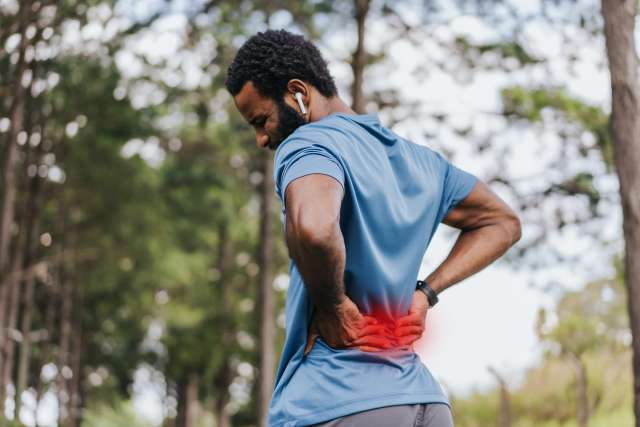Dear Doctors: I suffer from chronic back pain, and my doctor told me that the only treatment available is pain medication. Is that because the problem is with my lower back? Are there any other treatment options for this kind of chronic pain?
Dear Reader: Chronic pain is a debilitating condition that affects more than 50 million adults in the United States. When someone experiences ongoing pain for three or more months, it falls into the category of chronic pain. The pain can range from mild to severe, and takes many forms -- stiffness, tightness or aching, or sensations of throbbing, burning, stabbing, shooting, tingling or stinging.
People tend to focus on the physical sensations when talking about chronic pain, but the effects are often more widespread. Individuals living with chronic pain often struggle with sleep, can lose strength and stamina, may withdraw from normal daily activities, experience low mood or depression and often battle feelings of hopelessness.
The lower back problems you are grappling with are a common cause of chronic pain. We ask a lot from this area of the body, and we don't always treat it with care. The lower back is where the spine joins the pelvis, and it often bears the brunt of heavy lifting. If the back and stomach muscles aren't properly aligned and engaged or are tasked with more weight or torque than they can handle, all the structures get stressed. This includes the vertebrae and discs that make up the spine, and the connective tissues holding everything together. Injury, inflammation and misalignment, as well as degenerative conditions such as arthritis, can contribute to chronic lower back pain.
When it comes to treatment, pain medications can be helpful. These include nonsteroidal anti-inflammatories, muscle relaxants and nerve pain medications. The goal is to find the minimum dose needed to manage pain. Cortisone injections, which ease inflammation, can help short-term pain. However, due to potential side effects, such as changes to blood sugar control, high blood pressure, changes to mood, fluid retention and weight gain, they are not suitable for long-term use.
Alternative treatments such as acupuncture, chiropractic adjustment, massage, biofeedback and electrical nerve stimulation can be effective. Lifestyle changes are important as well. Both the mattress on your bed and your sleep positions can contribute to lower back pain. Poor posture and poor technique when lifting even light objects can also stress the back.
Physical therapy can be an important part of managing lower back pain. This typically includes exercises to strengthen the core, stretching and flexibility, and postural awareness. In some areas, these approaches are collected into a single program known as a “back school.” It's a targeted training and education program overseen by teams of therapists who specialize in the lower back.
Chronic pain is mentally and emotionally taxing. Practices that focus on mindfulness, such as tai chi, yoga, meditation and deep breathing, can also be helpful. And as with all areas of health, diet is important. A diet of lean proteins, fresh fruit and produce, and limited sugars and processed foods helps to lower inflammation.
(Send your questions to askthedoctors@mednet.ucla.edu, or write: Ask the Doctors, c/o UCLA Health Sciences Media Relations, 10960 Wilshire Blvd., Suite 1955, Los Angeles, CA, 90024. Owing to the volume of mail, personal replies cannot be provided.)





